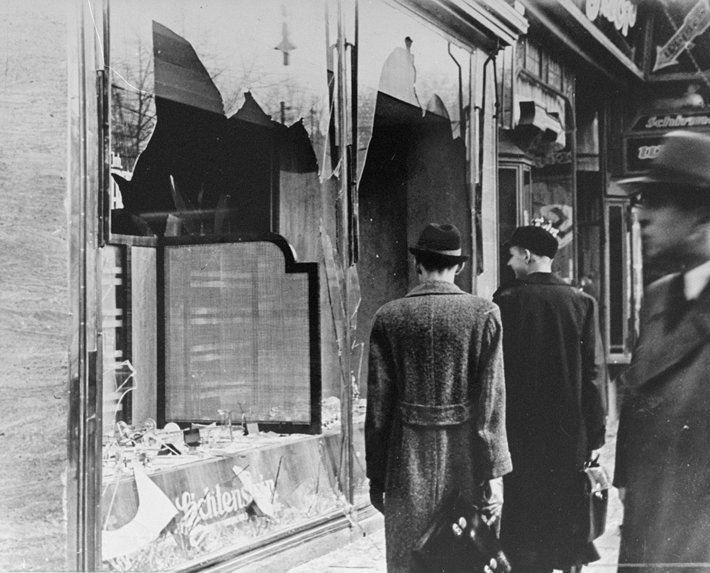
In a blog published on the STAND (Scientologists Taking Action Against Discrimination) website in honor of International Holocaust Remembrance Day, STAND blogger Wayne Hanson draws a parallel between the events leading to Hitler’s Final Solution and the destructive force of anti-religious propaganda today:
“Today, religious bigotry and intolerance has found a voice on the Internet, social media and television. Anti-Semitism is alive and well in Europe with a recent poll showing that 25% of Europeans are anti-Semitic.”
“America itself has a long history of religious intolerance, and while the First Amendment keeps government from interfering with religious belief, individuals and the media are not so constrained. Propaganda, lies and deliberate distortions abound, stirring outrage and distrust. It is much more difficult for a public figure or organization to collect damages from media than a private citizen because someone in the public eye must prove not just falsehood but malignant intent, so repeating lies and gossip without investigating them is ’protected,’ albeit unjust and unethical.”
Hanson describes the Nazi propaganda machine and how Hitler exploited the anti-religious climate it fomented:
“Hitler and his Propaganda Minister Joseph Goebbels understood the manipulation of public opinion through words. Hitler devoted several chapters of Mein Kampf to the importance of propaganda. ’Propaganda must always address itself to the broad masses of the people. …The broad masses of the people are not made up of diplomats or professors of public jurisprudence nor simply of persons who are able to form reasoned judgment in given cases, but a vacillating crowd of human children who are constantly wavering between one idea and another.’ He continued: ’The receptive powers of the masses are very restricted, and their understanding is feeble. On the other hand, they quickly forget. Such being the case, all effective propaganda must be confined to a few bare essentials and those must be expressed as far as possible in stereotyped formulas.’
“Nazi propaganda stirred up preexisting prejudice against the Jews, and beginning in 1920, mass media was used to revile Jews, build support for new laws restricting Jewish liberty, and convince the public that Jews were the cause of Germany’s loss in the First World War, and subsequent economic collapse. In 1933, when Hitler became chancellor, mass media was employed to coalesce popular support for the regime and its campaign against its enemies and the Jews. For the first time, radio reached a national audience and this new communication medium—and government control of it—began to control the minds and reactions of the German people.”
He described how Hitler used this technique to convert hate into acts of violence:
“A Jewish man in Paris killed a German diplomat. One source says it was the result of a lover’s quarrel, another that the assassin’s parents had been expelled from Germany. But whatever the cause, Goebbels and Hitler seized upon the event to order violent action against Jews and Jewish property. On November 9, 1938, they ordered the murder of Jews and the burning of Jewish property. The destruction was designed to appear as the result of spontaneous outrage, and the resulting violence destroyed more than 1,000 synagogues, caused the murders and jailing of thousands of Jews and the destruction of Jewish homes and cemeteries. Police were told not to intervene, fire departments told to stand down unless Aryan property was threatened, and the government seized the insurance payments and made the Jews clean up the mess. The so-called “Night of Broken Glass,” or “Kristallnacht” was the transition from intolerance and bigotry into Hitler’s “final solution”—the murder of 6 million Jews.
Hanson concludes:
“We know from history where unchecked bigotry leads. It’s now time to stand up for rational discourse and communication without the cheap shots and stereotyped formulas so prevalent these days in politics, race, sexuality, religion and other areas of life.”
The Charter on Journalistic Ethics in Relation to Respect for Religion or Belief contained in the booklet What is Freedom of Religion? Know Your Rights written by human rights attorney the late William C. Walsh provides guidelines to align both rights enshrined in the First Amendment of the Constitution of the United States—freedom of religion and freedom of speech, or of the press.
From its beginnings, the Church of Scientology has recognized that freedom of religion is a fundamental human right. In a world where conflicts are often traceable to intolerance of others’ religious beliefs and practices, the Church has, for more than 50 years, made the preservation of religious liberty an overriding concern.
The Church publishes this blog to help create a better understanding of the freedom of religion and belief and provide news on religious freedom and issues affecting this freedom around the world.
For more information visit the Scientology website or Scientology Network.


